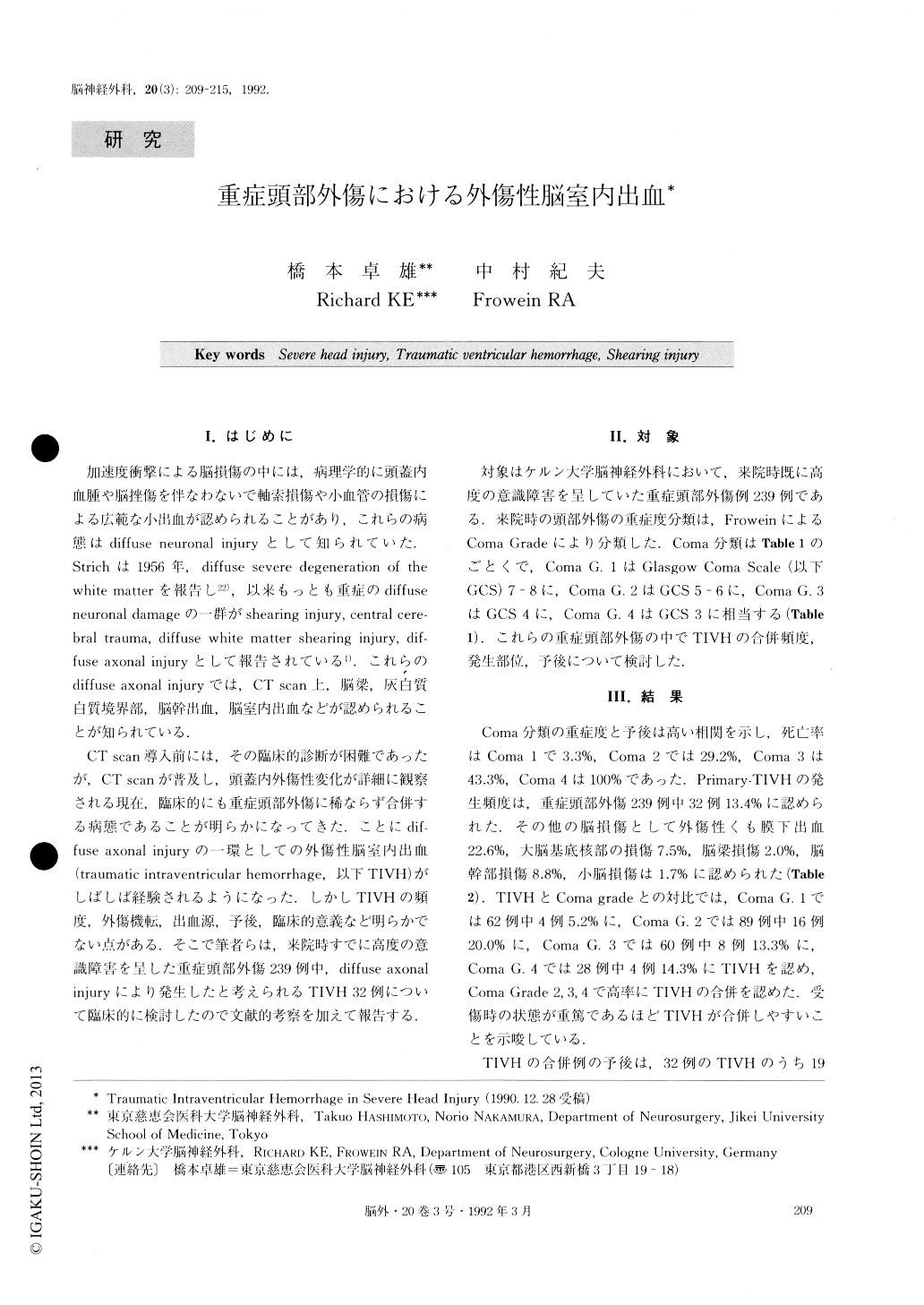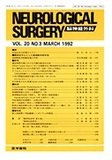Japanese
English
- 有料閲覧
- Abstract 文献概要
- 1ページ目 Look Inside
I.はじめに
加速度衝撃による脳損傷の中には,病理学的に頭蓋内血腫や脳挫傷を伴なわないで軸索損傷や小血管の才員傷による広範な小出血が認められることがあり,これらの病態はdiffuse neumnal injuryとして知られていた.Strichは1956年,diffuse severe degeneration of thewhite matterを報告し22),以来もっとも重症のdiffuseneuronal damageの一群がshearing injury, central Cere—bral trauma, diffuse white matter shearing injury, dif—fuse axonal injuryとして報告されている1).これらのdiffuse axonal injuryでは,CT scan上,脳梁,灰白質白質境界部,脳幹出血,脳室内出血などが認められることが知られている.
CT scan導人前には,その臨床的診断が困難であったが,CT scanが普及し,頭蓋内外傷性変化が詳細に観察される現在,臨床的にも重症頭部外傷に稀ならず合併する病態であることが明らかになってきた.ことにdif-fuse axonal injuryの一環としての外傷性脳室内出血(traumatic intraventricular hemorrhage,以下TIVH)がしばしば経験されるようになった.しかしTIVHの頻度,外傷機転,出血源,予後,臨床的意義など明らかでない点がある.そこで筆者らは,来院時すでに高度の意識障害を呈した重症頭部外傷239例中,diffuse axonalinjuryにより発生したと考えられるTIVH32例について臨床的に検討したので文献的考察を加えて報告する.
Among 329 cases with comatose state caused by se-vere head injury, 32 had primary intraventricular hemorrhage as revealed on initial CT scan (13.4%). We divided traumatic intraventricular hemorrhage into 4 types. Type 1: massive hemorrhage (9 cases). Type 2: subependymal hemorrhage (8 cases). Type 3 : damage of fornix or septum pellucid (8 cases). Type 4: Nieveau (7 cases). Most of these cases were caused bytraffic accident. Shearing injury may be the most accu-rate mechanism to produce the intraventricular hemor-rhage. Shear strain in severe head injury should cause tears of the subependymal vein, fornix, septum pelluci-dum and choroid plexus. 8 cases out of 32 ventricular hemorrhage showed tear of the subependymal vein. 8 of our cases showed damage of the fornix or septum pellucidum. These results suggested that the anatomical structure of the fornix and septum pellucidum wereweak points for shearing force. 20 cases in 32 with ven-tricular hemorrhage died. These cases were frequently associated with other traumatic lesions, namely contu-sion of white matter and grey matter, brain stem le-sions and cerebellar contusion, caused by shearing in-jury. Therefore, the prognosis of severe head injury with intraventricular hemorrhage is poor.

Copyright © 1992, Igaku-Shoin Ltd. All rights reserved.


